Widespread usage of bearings can be seen in various machines and mechanical devices owing to their ability to assist movement while simultaneously minimizing friction in the process. Industrial equipment, as well as household devices, work better because they have a bearing. This article focuses on the various bearing types, highlighting their structures and roles as well as the places where they can be most effectively used. With this knowledge, it is hoped that readers will further appreciate the significance of these vital parts of engineering and technology processes.
What are the Different Types of Bearings?
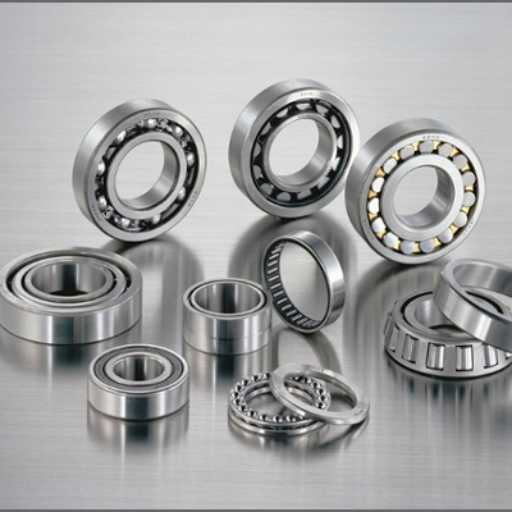
Bearings can be classified into different kinds, like ball bearings, roller bearings, thrust bearings, and plain bearings, based on their shape and purpose. Ball bearings are the most universal bearings with the capability to execute motion efficiently while also supporting radial and axial loads. Comparatively, roller bearings are designed in a way that allows them to bear more weight and are suited for use in industrial machines. A thrust bearing is a bearing that allows rotation while bearing an axial load, and it is popular in automotive transmissions. Lastly, plain bearings or bushings are covered as economical bearings that allow a sliding motion and can be used in low-speed or oscillating applications. Each type has its irreversible and indispensable function of the interrelation of mechanisms in various industries.
Understanding Ball Bearings
Ball bearings are amongst the most widely used and the most easily configurable components of the mechanical assembly. their popularity increases as they can bear radial and axial loads and, at the same time, operate at minimal friction. They are the most efficient in high-speed and low-friction applications, thus being the key components in sectors such as automotive, aerospace, and manufacturing. The systems I have worked with were all ball-bearing systems, and the reason is easy: their designs are well-engineered, and that’s why they work and last. Replacing components and preventing replaceable elements from failure is relatively simple; proper care, maintenance, and lubrication habits are the cornerstones of any ball-bearing-based operation, so regular checkups are prevalent.
An Introduction to Roller Bearings
I can offer certain information that can help in understanding their crucial points better:
- What Makes Roller Bearings Efficient?
Roller bearings serve to carry heavy loads while having extreme friction on them. They are made up of rolling elements like cylindrical, spherical, or tapered, which are rotatable around the shaft and help reduce the area of contact, thus making it easier during motion. This is particularly beneficial for high-speed operations. They are also able to withstand load perpendicular to the shaft and load along the shaft, which makes them suitable for multiple uses.
- Why Does Maintenance Matter for Roller Bearings?
The need for proper maintenance is critical with regard to the performance and lifespan of the bearings themselves. For instance, lubrication cuts down on the friction force generated by applying a protective film on the two surfaces in contact with each other so wear can be avoided. I would suggest searching for a possible lubricant from the manufacturer’s manual. Misalignments, contamination, or subpar lubrication do not have to worsen quite rapidly, as regular examination can resolve the issue. Parameters that require consistent monitoring include vibration, operating temperature, sound, and intensity of noise.
- How Do You Choose the Right Roller Bearing?
The selection process might seem complicated at first; however, disassembling it makes it easier to understand. I generally follow the exact steps provided below:
- Load Requirements: Gain an understanding of the load’s various types and magnitude, whether they are radial, axial or a combination of both.
- Speed Compatibility: Analyze the operational speed of the bearing and select the applicable rapped speed bearings.
- Environmental Conditions: Look into humidity, temperature, contaminating exposure, and the like.
- Service Life: See how long the bearing you are considering will last and how easy it is to service with respect to the requirements of your system.
- Material and Coating: Corrosion-resistant coatings are almost a must for aggressive environments.
Once these elements are observed and taken into account in an active maintenance program, roller bearings are able to operate reliably and durably. It’s all about knowing the functions and how to use the bearing in the best way!
Exploring Plain Bearings and Their Uses
When considering the use of plain bearings, it is important to consider their overall characteristics – their simplicity and flexibility in use across wide scopes of work. Unlike roller bearings that function with oscillating motion, plain bearings work with sliding motion and are often dependent on a lubricating film to prevent excessive friction and wear of the bearing surface. It is considered highly a necessity in the fields of engineering where inexpensive, small, and low-maintenance devices are needed. Some of the use cases include elements in vehicle operations, farm equipment and tools, and heavy industrial gear. The ability to use components under extremely high loads, in the case of nonlinear characters or even in a static state, is crucial where rolling features may not work well.
How Does Each Type of Bearing Work?
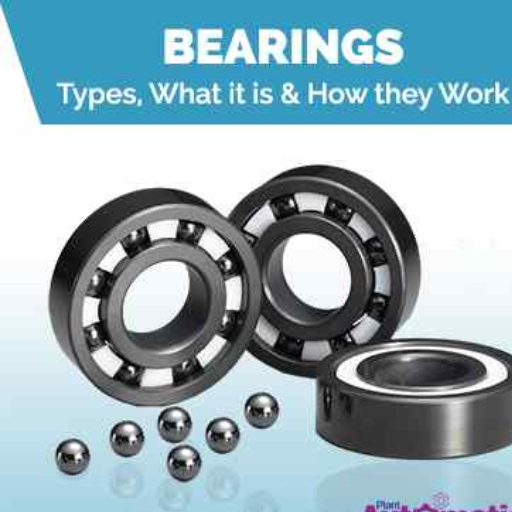
Every single component, like sliding bearing, magnetic bearing, etc., caters to its unique requirements for the workload and range of motions. Sliding bearings possess a very rough surface and lack lubrication, allowing for low friction operations—due to which they are capable of both linear operations and rotational ones. Ball and roller-hinged bearings are treated as rolling element bearings, which only utilize moving parts for reduced rotation resistance. Fluid bearings use a specialized solution that interfaces with the shaft and counters friction—a unique solution ideal for high-precision operations working around fast-moving speeds. As the name suggests, magnetic bearings use magnets to suspend components in mid-air at distances required to avoid even the slightest chance of contamination or wear. Moreover, each specific design can cater to specific needs, enhancing functionality and sturdiness on the go.
Functionality of Thrust Bearings
Thrust bearings are made to take care of the axial force, ensuring that the rotating shaft can move smoothly without bounding or moving along the axis. They efficiently support heavy loads in turbines, gear systems, automotive components, and other applications that apply axial force but require the system to remain operational and stable.
How Cylindrical Roller Bearings Operate
Cylindrical roller bearings operate by placing cylindrical rollers in between the inner and outer raceways. The rollers reduce the friction and apply radial loads at different angles, enhancing motion. They can support radial loads and also a little bit of axial loads, which makes them useful in applications with high speed. Some of these applications are electric motors, gearboxes, and pumps.
The Mechanism Behind Magnetic Bearings
Magnetic bearings utilize magnets to float and hold rotating pieces of an assembly without requiring any physical contact. They make use of electromagnets and some intricate control systems that allow the bearings to create a stable magnetic field strong enough to oppose gravity and the loads in use. This no-friction system minimizes wear and tear, improves accuracy, and enables the parts to operate at high speeds and with reduced energy usage; thus, they can be used in turbines, compressors, and sophisticated industrial machines.
What Are the Applications of Ball Bearings?
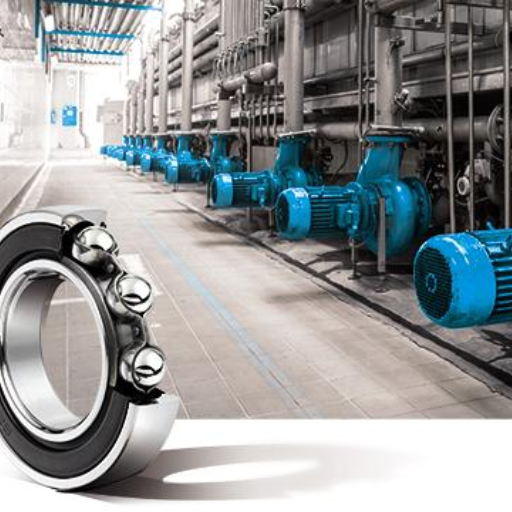
Ball bearings serve an important purpose in various fields, and as I have been widely exposed to them, there are capabilities that ball bearings offer to enable smooth rotational motion while reducing friction. They are extensively employed in automotive components, such as wheels, transmissions, and engines, where high reliability and utmost efficiency are required. In the case of industrial machinery, ball bearings are vital components for conveyor belts, electric motors, and pumps, contributing to durability and accuracy in their performance. Moreover, they are also used in domestic appliances, robotics, and aerospace technologies, suggesting flexibility as well as the ability to adjust to various technical requirements. More so, with the design and material advancements, they are able to work under more rigorous environmental conditions, reaching even more specialized areas of application.
Using Deep Groove Ball Bearings in Machines
deep groove ball bearings are an excellent option if machine operations require high reliability and accurate positioning. Their ability to perform radial and axial loads is a performance aid that increases their versatility. They are fine in design and robust which makes them ideal for use in high-speed electric motors and other tough applications like conveyor systems. I have noticed an enhancement in the efficiency and life of machinery after these bearings were incorporated, making them a good fit for both general and specialized mechanical requirements.
Role of Angular Contact Ball Bearings in High-Speed Applications
Due to their capacity to withstand a combination of radial and axial loads while being very stable, angular contact ball bearings are crucial in high-speed applications. The design of these bearings allows for large rotation speeds with minimum friction, which facilitates applications in aerospace, automotive, and precision engineering, among others. These bearings are able to achieve better performance, reliability, and lifetime in demanding high-speed applications by optimizing load and minimizing incompatibility.
Why Choose Roller Bearings Over Other Types?
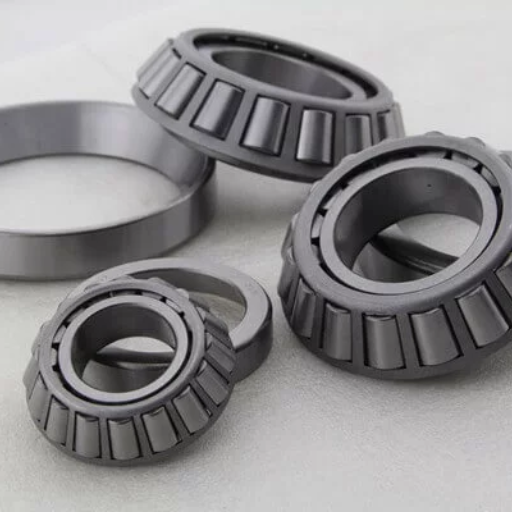
Compared to other types, roller bearings are favored because they have a high load-carrying ability and longevity. Bearings with rolling elements in their design that touch the bearing races help minimize friction and spread loads evenly. Owing to their design, such bearings are suitable for radial and axial loads with high bearing capacity, ensuring efficient and trouble-free operation in demanding applications. Furthermore, roller bearings are quite versatile and can be used in many industries, for example, in heavy machinery, transport, and industrial equipment. Their sturdy design offers increased reliability and service life, thus making them an economical solution for applications where high accuracy and high load is required.
Advantages of Tapered Roller Bearings
Tapered roller bearings fall under the category of highly efficient bearings that can withstand both axial and radial loads. Their unique geometrical design enables perfect positioning, reduced wear, and improved strength under bearing high stress. These bearings would be the best for applications where reliability, load-carrying capacity, and a long mean time between failures are required [], which is the reason why they are used frequently in automotive, construction, and heavy machinery.
When to Use Needle Roller Bearings
needle roller bearings are ideal for compact applications that require large load capacity. They consist of long cylindrical rollers and, therefore, can withstand large radial loads while being compact. Here are important features to evaluate whether needle roller bearings would be suitable for the application or not:
- Space Constraints -If the installation space available is small, needle roller bearings perform remarkably well, and their geometry is so slender that they are able to efficiently bear the load without taking too much space.
- Radial Load Requirements – When a radial load application is required, these bearings are more effective than a number of their competitors due to a better contact area with the load.
- Axial Load Capacity – However, it should be noted that while excellent with radial loads, needle roller bearings may need to be supported by thrust bearings where significant axial loads are concerned.
- Application Speed – Due to their design, they are restrictive to medium-speed operation; hence, if your system is very high speed, then most likely other options are better performing.
- Type of Housing or Fitting – There is a variety of needle roller bearings, for example, with or without inner rings or full complement rollers; it must be understood that the type of fitting and housing conditions shall determine the best needle roller in the system.
A demanding and unique area of operation with defined constraints provides a guarantee for optimal performance and the best efficiency and durability in your applications, while selecting needle roller bearings by their intended purpose ensures their universality and reliability.
Benefits of Spherical Roller Bearings in Heavy Loads
A spherical roller bearing, despite the complex configuration, makes fitting very easy. The defining feature of this type of bearing is the number of rolling elements; thus, they can withstand extremely high thrust loads while retaining a durability that is often unmatched. The circular design also makes it possible for them to handle both radial and axial loads without putting any stress on the bearing. From an operating point of view, they can withstand harsh working conditions as well,l such as bending and deformation of shafts with attrition on the surfaces. They are, thus, suitable for industries such as mining, construction, and power generation, which operate under high stresses and temperatures. Due to their reliability and high service life, they tend to reduce the amount of downtime and maintenance required, further improving the efficiency of the system.
What Are the Benefits of Using Fluid Bearings?
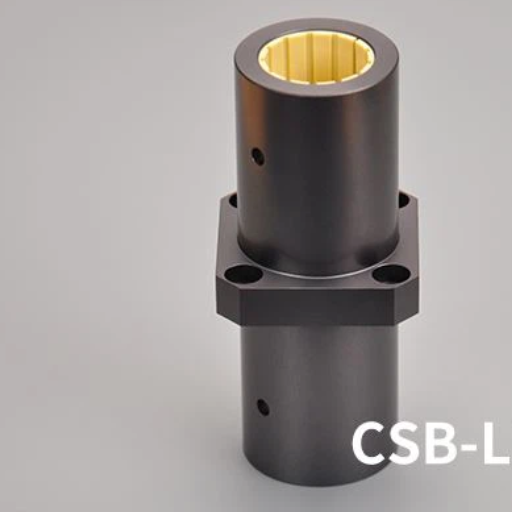
Fluid bearings have many noticeable advantages, especially in conditions where high accuracy and low friction are critical. It has been my experience that contactless operation of moving parts greatly reduces wear and increases the life of the machine, and this is one of the essential advantages of these devices. This leads to the improvement of smoothness and machinery service requirements. Furthermore, fluid bearings are experts in vibration damping that boost the reliability and efficiency of high rotation rates or high load systems. Their use is unnecessary in low precision areas, however, precision industries, such as, aerospace, semiconductor production have no room for even slight errors. To put it another way, fluid bearings will change the approach to increasing the efficiency and reliability of the operational process.
Understanding Hydrodynamic and Hydrostatic Bearings
A shaft’s movement generates a fluid film that easily carries a load, and this is the principle that dynamic bearings operate. In an environment where motion is constant, a fluid film easily forms on the bearing during movement. Conversely, hydrostatic bearings make use of an external pressure pump, which provides a fluid film so that it can support the load even if the system has no movement. Both these types of bearings are very useful, however, they get selected based on the requirements of the application – hydrodynamic works best in high-speed situations, low speed or stationary conditions make hydrostatic the better option due to its enhanced stability and accuracy.
Suitability of Fluid Bearings for Different Applications
The applications fluid bearings work well in having low friction, precision, and a long working life. For high-speed rotating machines, such as turbines and compressors, hydrodynamic bearings must be relied on since they form a strong lubricant film when the machine is working. On the other hand, hydrostatic bearings are most appropriate in situations that require very high accuracy and load capacity, such as in CNC machines, telescopes, or other high-precision measurement equipment. In the end, it all boils down to operational speed load and accuracy requirements.
How to Choose the Right Bearing for Your Needs?
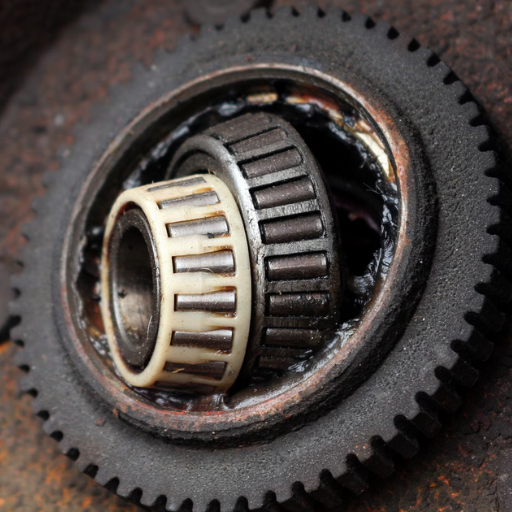
Selecting the Right Bearing
Choosing the right bearing should begin with a thorough consideration and evaluation of several basic factors related to the building and functions of a particular application. First of all, think about the important speed and load parameters – hydrodynamic bearings would fit in applications that operate under relatively faster and heavier loads, while hydrostatic would be suitable, and such applications would need more accuracy and stability at lower operational speeds. After this, considerations such as expected lifetime, environmental, and maintenance aspects have to be accounted for. In applications where high accuracy or sensitive devices are employed, hydrostatic bearings would deliver the best results. On the other hand, hydrodynamic bearings would still be preferred for everyday usage in more strenuous work environments. Consideration of such factors should lead you in the proper direction to solve your problem.
Factors to Consider in Bearing Selection
In choosing the right bearing for a given purpose, a number of factors, such as operating conditions, speed requirements, load capacity, and precision, have to be taken into account. The kind and the amount of loads (axial or radial), the rotational speed, and some other environmental factors that may affect temperature and contamination are to be assessed. Besides, maintenance requirements, life costs, and price efficiency are to be taken into consideration for the bearing to meet the actual application of the end user.
Comparing Various Types of Bearings for Specific Uses
Each type of bearing has its own purpose according to its application needs. Ball bearings are ideal for applications requiring moderate loading and high rotational speeds since they have low friction and good adaptability. For applications exposed to huge axial or radial loading, roller bearings possess greater strength than standard bearings and rebuildable elements. Needle bearings are suited for space-constricted applications that have a narrow overall cross-section and a high load-carrying capacity. Hydrostatic bearings stand out in situations where accuracy or low wear is paramount, such as in very demanding machines, but are not suitable for high rotational speeds due to their lack of physical contact. On the other hand, hydrodynamic bearings are geared toward higher-speed, heavy-duty applications since these systems are robust, and enhanced durability is required in extreme conditions. Always remember to consider the type of bearing to the scope of the usable functionality and the reliability requirements.
Reference
- Types of Bearings and Their Applications – JVN Bearings
- Types of Bearings | Uses & Working Mechanisms Explained – Factory
- This is how bearings are used for machines in industry – Koyo
Frequently Asked Questions (FAQs)
Q: What are the main types of bearings and their applications?
A: The main types of bearings include ball bearings, roller bearings, and plain bearings. Ball bearings, such as thrust ball bearings and radial ball bearings, are commonly used in applications requiring high precision and low friction. Roller bearings, which include thrust roller bearings and cylindrical roller bearings, are suitable for heavy load applications. Plain bearings, the simplest type of bearing, are used in applications where low cost and simple design are important.
Q: What is a thrust ball bearing, and where is it used?
A: A thrust ball bearing is a type of ball bearing designed to handle axial loads. It is used in applications where the bearing axis is parallel to the load, such as in automotive steering and suspension systems and in machinery that requires high axial rigidity.
Q: How do angular contact bearings differ from other types of ball bearings?
A: Angular contact bearings are designed to handle both radial and axial loads simultaneously, unlike other types of ball bearings that typically handle either radial or axial loads. These bearings are commonly used in high-speed and high-precision applications, such as in machine tools and aerospace engineering.
Q: What are self-aligning ball bearings, and what are their advantages?
A: Self-aligning ball bearings contain two rows of balls and a common spherical raceway in the outer ring, allowing them to accommodate misalignment between the shaft and the housing. This makes them ideal for applications where alignment errors could occur, such as in agricultural machinery and conveyors.
Q: What are roller thrust bearings,s and what are their typical use cases?
A: Roller thrust bearings are designed to handle large axial loads and are typically used in applications like automotive transmissions and industrial machinery. They offer high load-carrying capacity and are suitable for applications where bearing rigidity is crucial.
Q: How do magnetic bearings work, and what are their benefits?
A: Magnetic bearings use magnetic fields to support a load without physical contact, reducing friction and wear. They are used in applications requiring high-speed rotation and precision, such as in turbines and medical equipment. Magnetic bearings offer high efficiency and long service life.
Q: What is a sleeve bearing, and in which situations is it used?
A: A sleeve bearing, also known as a plain bearing, is the simplest type of bearing that consists of a cylindrical sleeve around the bearing surface. It is used in applications where low-speed rotation is needed, and cost-effectiveness is prioritized, such as in household appliances and office equipment.
Q: What are the characteristics of radial ball bearings?
A: Radial ball bearings are designed to handle radial loads primarily, but they can also accommodate some axial loads. They are available in various configurations and are widely used in electric motors, gearboxes, and pumps due to their versatility and efficiency.
Q: What is the importance of bearing rigidity in industrial applications?
A: Bearing rigidity is crucial in industrial applications as it ensures the stability and alignment of rotating components under load. High bearing rigidity minimizes deflection and vibration, leading to increased precision and performance in machinery such as CNC machines and robotics.
Q: How do bearings like passive magnetic bearings differ from traditional bearings?
A: Passive magnetic bearings use permanent magnets to support a load without the need for an external power source, unlike traditional bearings that rely on physical contact. These bearings offer the advantage of low maintenance and are suitable for use in environments where minimal interference is required.
